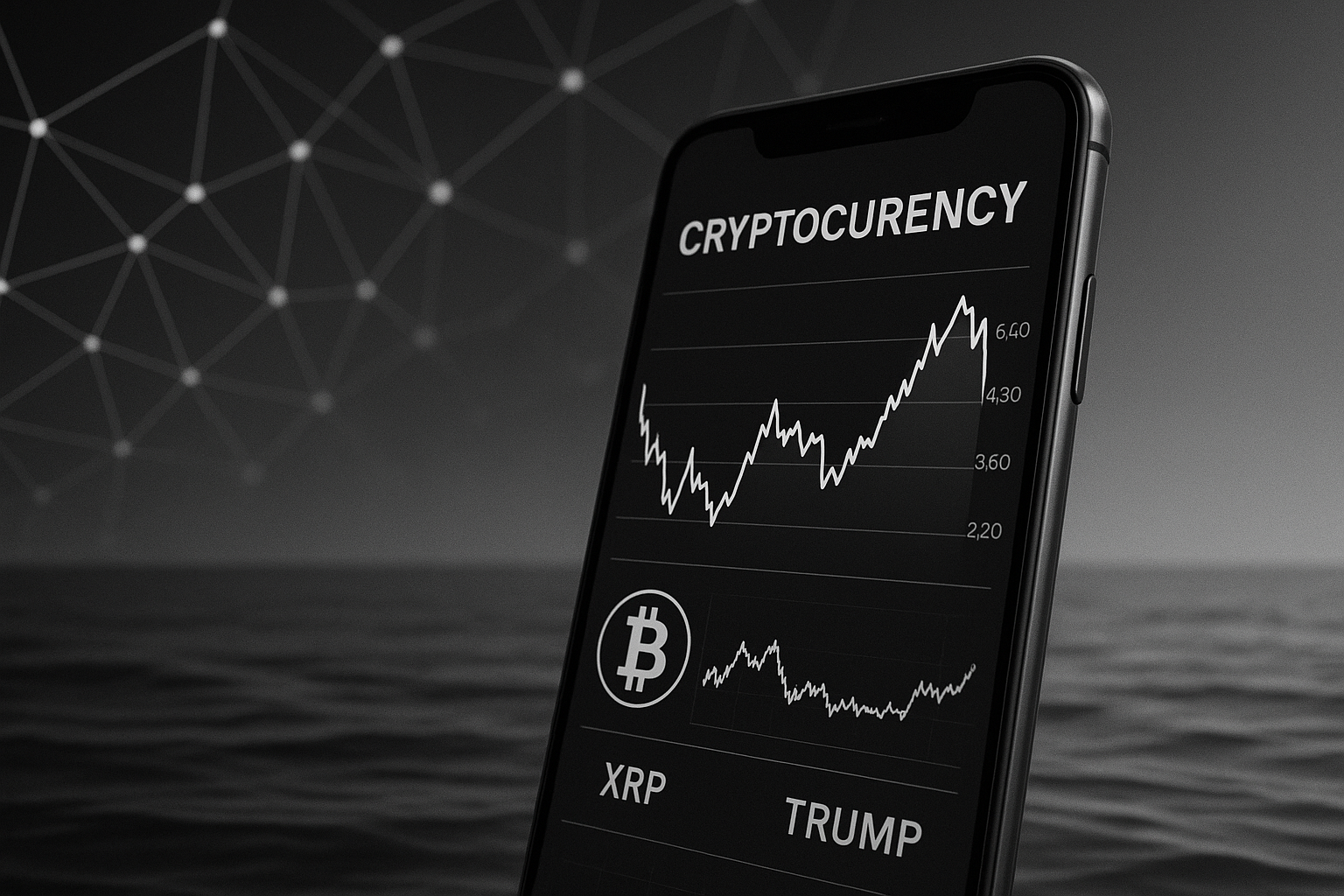So picture this: it’s 2 a.m., I’m half-asleep, doom-scrolling on TradingView like any responsible adult, when the XRP/USD volatility chart smacks me in the face. I literally rubbed my eyes, thought my ISP was throttling data again, and refreshed. Nope—same number. 44% 30-day annualized realized volatility. That’s the chillest XRP has been since, wait for it, the week Donald Trump first tweeted “MAKE AMERICA GREAT AGAIN” from the White House lawn back in November 2016. Wild, right?
Alright, but What Does “44% Realized Vol” Even Mean?
If you’re new here, realized vol is basically the backward-looking cousin of implied vol. We crunch the day-to-day price changes, annualize them, and slap a percentage on the output. So 44% means if XRP kept wobbling like it has the past month, your annualized swing would be 44%. For context, Bitcoin is tooling around ~35% right now, and ETH about 40-ish. XRP used to be the drama queen at 90–100% not so long ago. Seeing it below 50% feels like your extrovert friend suddenly turning quiet at brunch—you instinctively wonder, “What are you plotting?”
Here’s Why I Had to Double-Check
First thing I did: pull up the same metric on Coin Metrics’ community dashboard. Same 44% reading. Then I hopped over to Glassnode just to be annoying; yep, corroborated. So unless every data provider has collectively glitched out (possible but unlikely), we’re witnessing a genuine snooze-fest in XRP world.
And look, I’ve traded this coin since the 2017 ripple-mania. Volatility is XRP’s brand. Watching it laze around is like seeing Doge without memes—feels off.
Now Here’s the Interesting Part
Whenever vol tanks this hard, one of two things usually follows:
- We keep drifting sideways until everyone forgets we exist. (See: Litecoin 2019.)
- A monster move erupts because market makers can’t sit on their hands forever. (See: BTC right before the 2020 COVID crash.)
Which camp will XRP fall into? Honestly, I’m torn.
Possible Catalysts Hiding in Plain Sight
1. SEC vs. Ripple endgame. Judge Torres’ summary judgment did pump us to $0.90 back in July, but since then the legal docket’s been mostly procedural. If we get an unexpected settlement headline, options desks on Deribit will light up like Christmas.
2. Macro detours. The dollar index (DXY) is wobbling again. If Powell keeps rates higher for longer, risk-on assets, including XRP, could stay muted. Flip side: a hint of a rate cut and suddenly all those dormant altcoins start front-running liquidity.
3. Ripple’s IPO rumors. Brad Garlinghouse keeps teasing a U.S. listing once the lawsuit dust settles. Even a formal S-1 filing could yank XRP off its couch.
Why This Matters for Your Portfolio
I know some folks treat vol as background noise, but if you’re running anything remotely systematic, position sizing literally lives and dies on those numbers. Lower realized vol means:
- Leverage junkies on Binance can crank up margin without instantly liquidating.
- Options premiums collapse—great if you’re a buyer hoping for a breakout, terrible if you’ve been selling covered calls for passive yield.
- Whales can accumulate without telegraphing moves. In my experience, that’s when the sneaky stuff happens.
Side note: I noticed Skew’s dashboard showing XRP 30-day at-the-money implied vol is still pricier at 55%. That 11-point gap between implied and realized usually screams, “Traders expect fireworks, just not sure when.” Could be a juicy long straddle play—if you’re okay bleeding theta for a bit.
But Wait, Didn’t XRP Just Lose Market Share?
Yep. CoinGecko’s latest dominance chart puts XRP at 2.2%, down from 2.8% post-Torres ruling. Money rotated into Solana and meme coins (because of course). So part of this vol drop may simply be traders ghosting the pair. Less order flow, less movement.
My Gut Feeling (Take with a Grain of Satoshi)
I keep coming back to that 2016 analogy. Back then, XRP coiled around 40% vol for a while, then ripped 1,000+% in Q1 2017. History doesn’t repeat, it rhymes yadda yadda, but the rhyme scheme feels familiar. On-chain data even shows upticks in dormant coins moving—Glassnode’s ‘Age Consumed’ metric spiked last week. Somebody’s shuffling bags quietly.
At the same time, funding rates on perpetuals are flatlined. Traders aren’t leaning one way yet. It’s the classic calm-before-something scenario, but whether it’s a hurricane or just a summer breeze—I’d be lying if I said I knew.
“Markets can stay boring longer than you can stay solvent.” — some trader on Crypto Twitter, probably munching ramen at 3 a.m.
So What’s the Play?
If you’re conservative, maybe just enjoy the peace. Stack spot, stake on Uphold, and wait. If you’ve got a degenerate streak (guilty), nibble on cheap out-of-the-money options dated January. Worst case you burn premium; best case you meme-step into a 5× move.
Either way, keep one ear on the SEC court calendar and the other on macro data prints. When vol is this compressed, the first headline that surprises will be the match.
My Data-Driven Prediction
Based on the historical vol percentile (we’re in the 5th percentile) and Ripple’s legal timeline, I’m setting a personal alert: if realized vol stays sub-50% through December, I expect a ±35% price swing before February. No clue which direction, but the math says expansion is overdue.
And hey, if I’m dead wrong, feel free to roast me on X (I’m @ChartNerd). The blockchain keeps receipts; so do screenshots.



